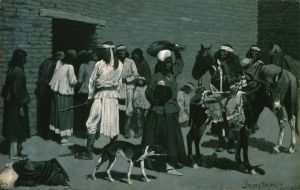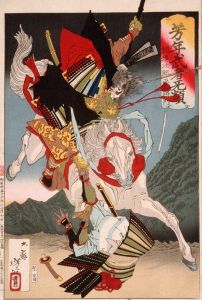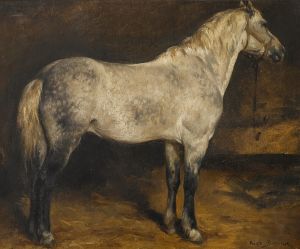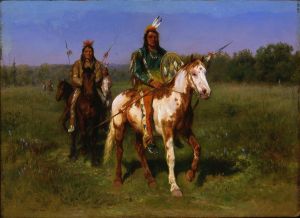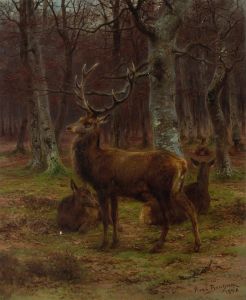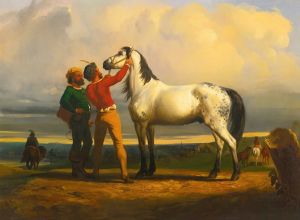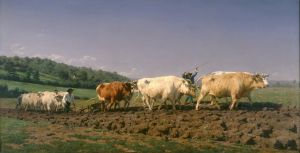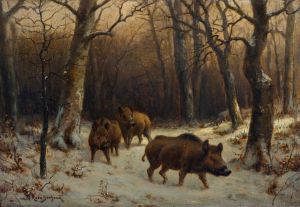
Indian on Horseback
A hand-painted replica of Rosa Bonheur’s masterpiece Indian on Horseback, meticulously crafted by professional artists to capture the true essence of the original. Each piece is created with museum-quality canvas and rare mineral pigments, carefully painted by experienced artists with delicate brushstrokes and rich, layered colors to perfectly recreate the texture of the original artwork. Unlike machine-printed reproductions, this hand-painted version brings the painting to life, infused with the artist’s emotions and skill in every stroke. Whether for personal collection or home decoration, it instantly elevates the artistic atmosphere of any space.
Rosa Bonheur was a renowned French artist in the 19th century, celebrated for her realistic depictions of animals and rural scenes. She was born on March 16, 1822, in Bordeaux, France, and became one of the most famous female painters of her time. Bonheur's work is characterized by its meticulous attention to detail and her ability to capture the essence of her subjects, often animals, with great accuracy and empathy.
"Indian on Horseback" is one of Bonheur's lesser-known works, and there is limited information available about this specific painting. However, it is consistent with her interest in depicting animals and human figures in natural settings. Bonheur was known for her dedication to realism, and she often conducted extensive studies of her subjects to ensure accuracy in her work. This dedication is evident in her more famous works, such as "The Horse Fair," which showcases her ability to portray dynamic movement and intricate details.
Bonheur's interest in depicting scenes involving horses and other animals can be traced back to her upbringing. Her father, Oscar-Raymond Bonheur, was a landscape and portrait painter who encouraged her artistic pursuits from a young age. Rosa Bonheur's fascination with animals was further fueled by her visits to slaughterhouses and her studies of animal anatomy, which informed her realistic portrayals.
Throughout her career, Bonheur broke many gender norms of her time. She often wore men's clothing, which allowed her greater freedom to move about in public spaces and engage in activities that were typically reserved for men, such as sketching in stockyards and attending horse fairs. In 1857, she obtained a special permit from the French government to wear trousers, a testament to her determination to pursue her art without societal constraints.
Bonheur's work gained international recognition, and she became the first woman to receive the Grand Cross of the Legion of Honour in 1865, awarded by the French Empress Eugénie. Her success and fame were unusual for a woman in the 19th century, and she became a role model for future generations of female artists.
While "Indian on Horseback" may not be as widely recognized as some of her other works, it reflects Bonheur's consistent themes of exploring the relationship between humans and animals and her commitment to realism. Her legacy continues to influence artists today, and her works are celebrated for their technical skill and emotional depth.
In summary, Rosa Bonheur's "Indian on Horseback" fits within her broader oeuvre of animal and human studies, showcasing her dedication to realism and her pioneering role as a female artist in the 19th century. Despite the limited information on this specific painting, Bonheur's impact on the art world remains significant, and her works continue to be appreciated for their artistry and historical importance.






